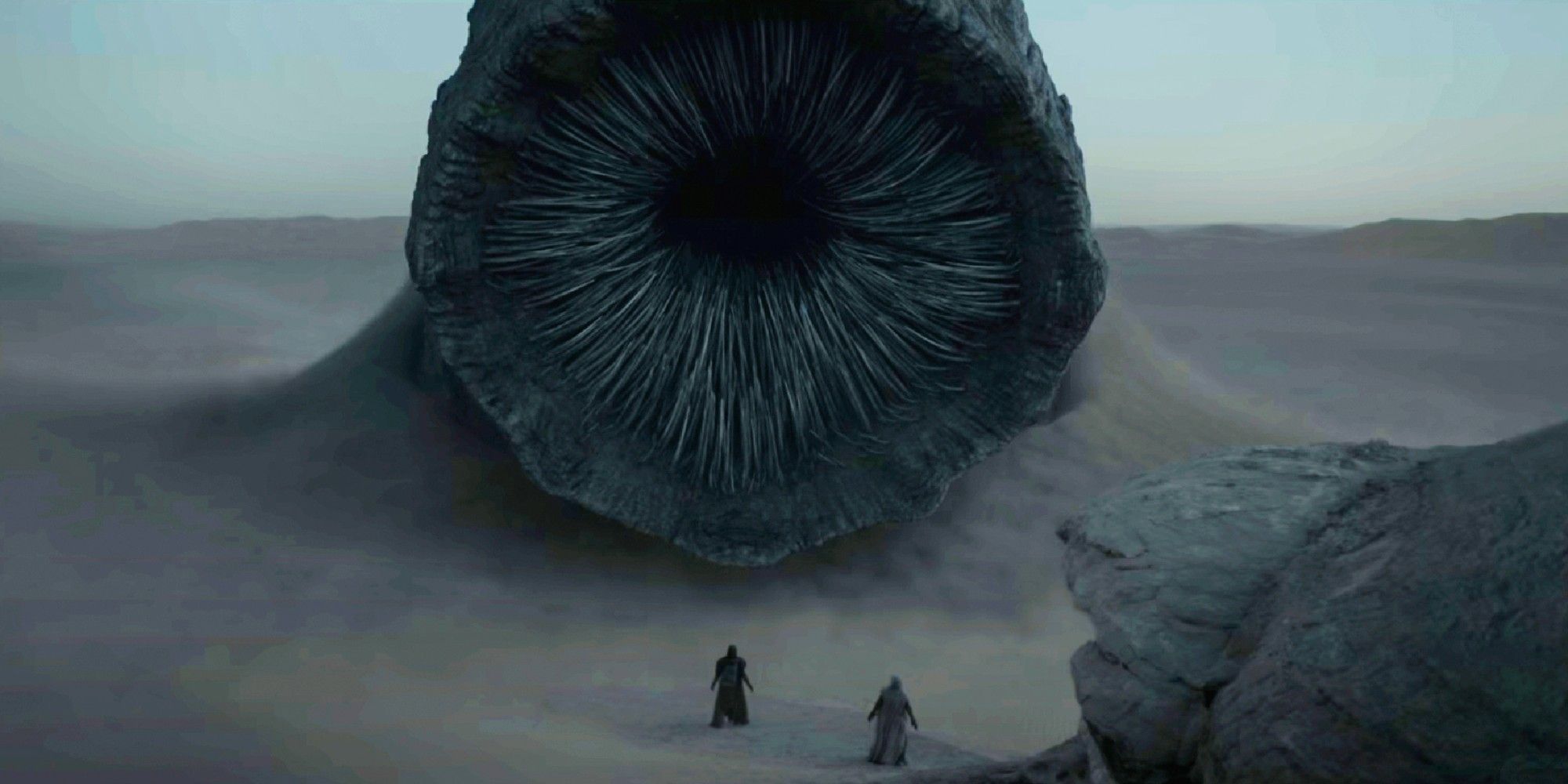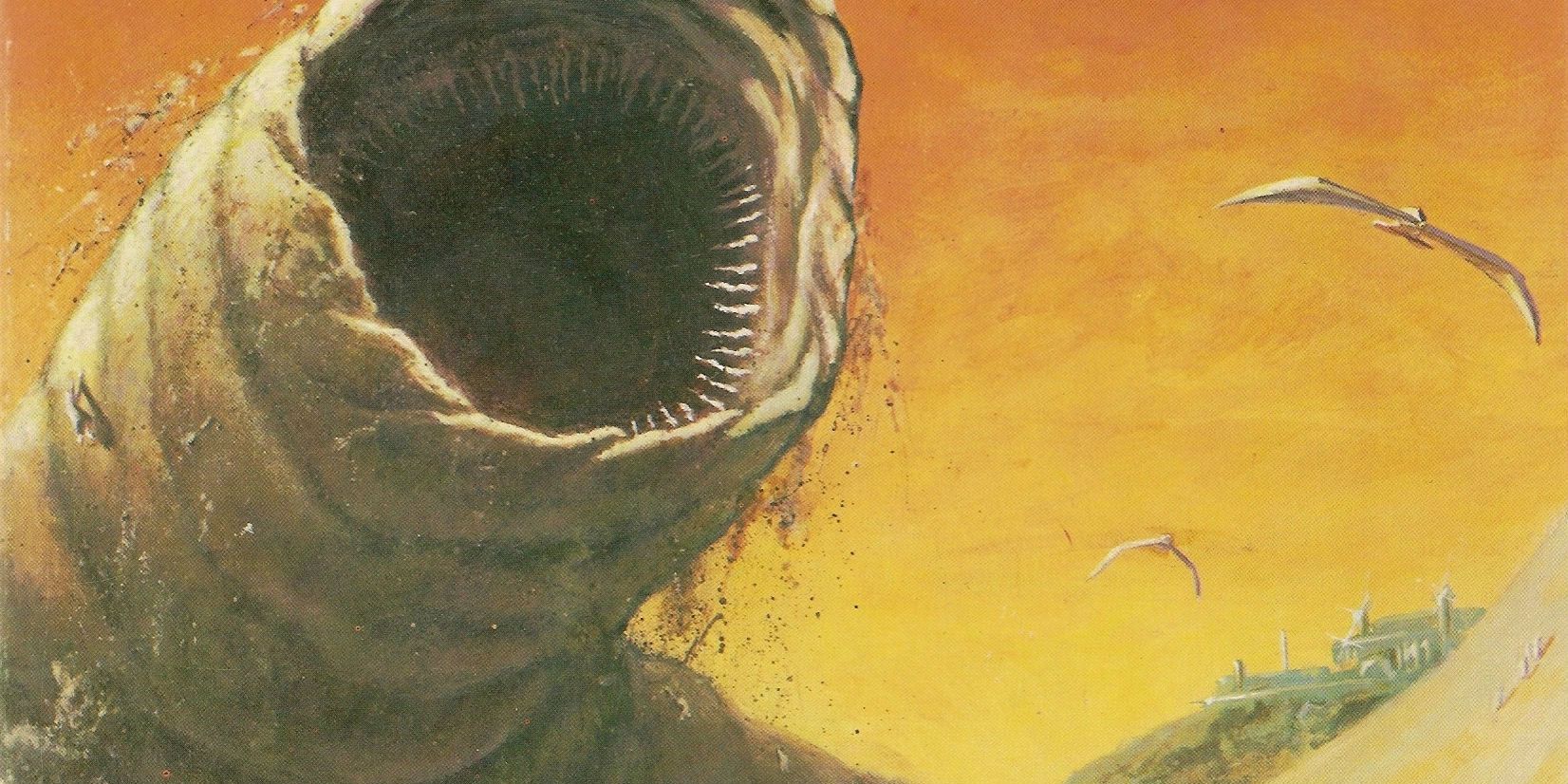In part, Dune's instantaneous critical success is owed to the terror and mystique inspired by the mysterious sandworms that inhabit the planet Arrakis. Denis Villeneuve's remake and Timothee Chalamet’s performance as Paul Atreides has been an unparalleled box office smash, with Dune representing a career-best performance globally for both men to date. Both casual and devoted sci-fi fans have once again become enraptured by the narrative of Dune, with the backstory to one of Arrakis' biggest threats a wholly compelling one.
Frank Herbert’s 1965 novel Dune first introduces the sandworm, a menacing creature that adds tension to the plot and is vitally important to the empire's economy. At the beginning of Dune, Paul and his family relocate to Arrakis, a desert planet that is the universe’s only source of spice – a vital commodity in the world of Dune. Arrakis’s environment is harsh and unforgiving, and there isn’t much that can live there beyond the Fremen and the imposing sandworms save a handful of rodent-Esque species.
The terrifying, indiscriminate, and uncompromising nature of the sandworms offers would-be conquerors of Arrakis a difficult challenge to overcome. This Shai-Hulud conundrum is key to the heart of Dune, not only in terms of the film's plot but also in defining the power dynamics at the center of its complex lore. The worms and the valuable and rare commodity they guard make them more than just monstrous killing machines, with the worms becoming the embodiment of the perils of colonization.
Dune's sandworms are giant creatures that live beneath the surface of the desert and are a constant threat to the Fremen who live there. They are said to grow “up to 450 meters long”, which, to help imagine this size, is equivalent to about 14 times larger than a blue whale. In terms of appearance, sandworms have roughly the same shape and proportions as an earthworm, albeit on a far more grandiose scale. Their skin is rough and scaly, acting as unbreakable armor against Arrakis' coarse sand, as well as the rare phenomenon of attacks by other sandworms. Shai-Hulud lore also states that if a worm's back scale is pulled up, the sandworm will breach the surface of the sand, allowing a humanoid rider to control the great beast.
So ferocious are these creatures that few people who see sandworms live to tell the tale. They are extremely territorial and will stand their ground against humans and other sandworms, sensing any vibrations caused on the surface of the sand and attacking immediately in response. The Fremen typically know how to deal with sandworm attacks, but outsiders can rarely survive them. Sandworms are more than just a means to scare the inhabitants of Arrakis, however: They also play an important role in Dune’s economy and culture.
Arrakis is the home of the spice Melange, without which the planet's and the empire's commerce would collapse. Spice lengthens the human lifespan, heightens awareness, and makes space travel possible. It is also highly addictive, and spice withdrawals are fatal. Sandworms are the source of the spice, as their larvae produce the valuable commodity, making them fiercely protective of the deposits as a result. Sandworms are one of the most terrifying aspects of Dune, as their sheer size makes their presence incredibly intimidating. The fact that Paul is an outsider to Arrakis only makes the threat more sinister, as only Fremen can handle them. With Paul’s enhanced powers and abilities that burgeon at the end of Villeneuve's Dune, however, he may yet stand a chance against these menacing creatures in the confirmed Dune sequel.



